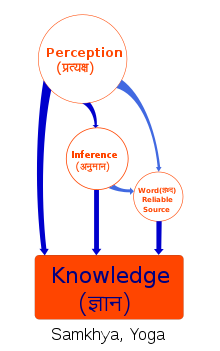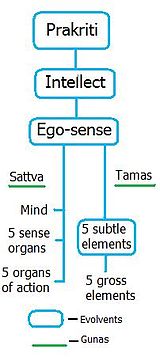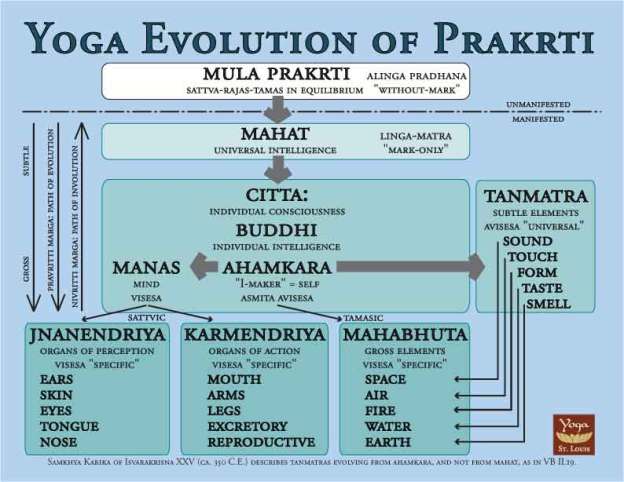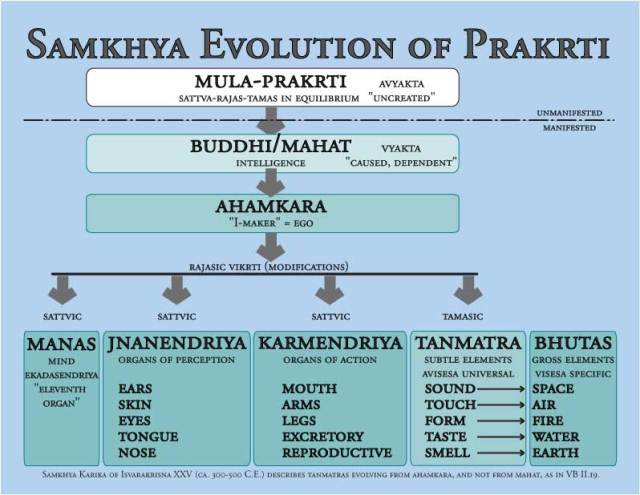INFINITE GOD CREATED FINITE WORLD
This article is in response to a claim about Samkhya or Sankhya Doctrine found in ‘GURBANI’ Holy Book of Sikhism. Firstly, I state that I have not met any person of Sikh faith who may not believe in existence of Infinite God. Because of that Belief or Faith, they attend Worship Service to seek wisdom of Guru with sense of devotion, respect, obedience, and humility.
Secondly, to discuss the validity of Samkhya or Sankhya doctrine, I have to discuss each term used in conversation. For example, the term ‘AKASA’ simply refers to Earthly phenomenon and it demands interaction between Light rays and Earthly atmosphere apart from presence of living things with faculties of Sense Perception.
WHAT IS PRAKRTI OR NATURAL ENVIRONMENT?
I ask my readers to reflect on one particular term at a time to focus on the subject matter. Again, my concern is not about God’s existence. There is not even one term used by Sankhya Doctrine that is inferentially correct. For example, the understanding of ‘PRAKRTI’ or Nature or Natural Environment is flawed. Every living thing establishes its own existence by separating itself from its external environment. Every Living Cell functions by separating itself from other Living Cells even if all the Cells represent the same Living Organism. Prakrti refers to external, environment of specific Living Things. In modern Science it includes Physical, Social, Cultural, Political, Economic, and Biological Environment. Other Living Things present in my Environment determine my Actions and my Human Behavior. While ‘PURUSHA’ is an individualized term, Prakrit includes other Purushas and all other Living Things including Bacteria and Viruses.
For each Living Thing exists as Individual with Individuality, Self-Identity, Self-Recognition, Ego, and Ahamkara is prerequisite for sustaining reality of existence.
Rudranarasimham Rebbapragada
Ann Arbor, MI 48104-4162 USA
BHAVANAJAGAT.ORG
From: DEVINDER SINGH GULATI:
The Sankhya doctrine does take reason into account. It considers perception, inference and reliable testimony as three reliable means to knowledge.

The Samkhya system espouses dualism between consciousness and matter by postulating two “irreducible, innate and independent realities: puruṣa and prakṛti. While the prakṛti is a single entity, the Samkhya admits a plurality of the puruṣas in this world. Unintelligent, unmanifest, uncaused, ever-active, imperceptible and eternal prakṛti is alone the final source of the world of objects which is implicitly and potentially contained in its bosom. The puruṣa is considered as the conscious principle, a passive enjoyer (bhokta) and the prakṛti is the enjoyed (bhogya). Samkhya believes that the puruṣa cannot be regarded as the source of inanimate world, because an intelligent principle cannot transform itself into the unconscious world.
Prakṛti is the first cause of the manifest material universe — of everything except the puruṣa. Prakṛti accounts for whatever is physical, both mind and matter-cum-energy or force. Since it is the first principle (tattva) of the universe, it is called the pradhāna, but, as it is the unconscious and unintelligent principle, it is also called the jaDa. It is composed of three essential characteristics (trigunas). These are:
- Sattva – poise, fineness, lightness, illumination, and joy;
- Rajas – dynamism, activity, excitation, and pain;
Tamas – inertia, coarseness, heaviness, obstruction, and sloth.
The unconscious primordial materiality, prakṛti, contains 23 components including intellect (buddhi,mahat), ego (ahamkara) and mind (manas); the intellect, mind and ego are all seen as forms of unconscious matter.

Some evolutes of prakṛti can cause further evolution and are labelled evolvents. For example, intellect while itself created out of prakṛti causes the evolution of ego-sense or ahamkara and is therefore an evolvent. While, other evolutes like the five elements do not cause further evolution. It is important to note that an evolvent is defined as a principle which behaves as the material cause for the evolution of another principle. So, in definition, while the five elements are the material cause of all living beings, they cannot be called evolvents because living beings are not separate from the five elements in essence.
| prakṛti | Root evolvent Primordial matter | |
| Internal instruments | Intellect (Buddhi or Mahat), Ego-sense (Ahamkāra), Mind (Manas) | Evolvent |
|---|---|---|
| External instruments | Five Sense organs (Jnānendriyas), Five Organs of action (Karmendriyas) | Evolute |
| Subtle elements | Sound (Shabda), Touch (Sparsha), Form (Rupa), Taste (Rasa), Smell (Gandha) | Evolvent |
| Gross elements | Ether (Ākāsh), Air (Vāyu), Fire (Agni), Water (Jala), Earth (Prithvi) | Evolute |
The intellect is the first evolute of prakṛti and is called mahat or the great one. It causes the evolution of ego-sense or self-consciousness. Evolution from self-consciousness is affected by the dominance of gunas. So dominance of sattva causes the evolution of the five organs of perception, five organs of action and the mind. Dominance of tamas triggers the evolution of five subtle elements– sound, touch, sight, taste, smell from self-consciousness. These five subtle elements are themselves evolvents and cause the creation of the five gross elements space, air, fire, water and earth. Rajas is cause of action in the evolutes.] Purusha is pure consciousness absolute, eternal and subject to no change. It is neither a product of evolution, nor the cause of any evolute.
Samkhya regards ignorance (avidyā) as the root cause of suffering and bondage (Samsara). Samkhya states that the way out of this suffering is through knowledge (viveka). Mokṣa (liberation), states Samkhya school, results from knowing the difference between prakṛti (avyakta-vyakta) and puruṣa (jña).
Other forms of Samkhya teach that Mokṣa is attained by one’s own development of the higher faculties of discrimination achieved by meditation and other yogic practices. Moksha is described by Samkhya scholars as a state of liberation, where Sattva guna predominates.
Classical Samkhya argues against the existence of God on metaphysical grounds. The following arguments were given by the Samkhya philosophers against the idea of an eternal, self-caused, creator God:
- If the existence of karma is assumed, the proposition of God as a moral governor of the universe is unnecessary. For, if God enforces the consequences of actions then he can do so without karma. If however, he is assumed to be within the law of karma, then karma itself would be the giver of consequences and there would be no need of a God.
- Even if karma is denied, God still cannot be the enforcer of consequences. Because the motives of an enforcer God would be either egoistic or altruistic. Now, God’s motives cannot be assumed to be altruistic because an altruistic God would not create a world so full of suffering. If his motives are assumed to be egoistic, then God must be thought to have desire, as agency or authority cannot be established in the absence of desire. However, assuming that God has desire would contradict God’s eternal freedom which necessitates no compulsion in actions. Moreover, desire, according to Samkhya, is an attribute of prakṛti and cannot be thought to grow in God. The testimony of the Vedas, according to Samkhya, also confirms this notion.
- Despite arguments to the contrary, if God is still assumed to contain unfulfilled desires, this would cause him to suffer pain and other similar human experiences. Such a worldly God would be no better than Samkhya’s notion of higher self.
- Furthermore, there is no proof of the existence of God. He is not the object of perception, there exists no general proposition that can prove him by inference and the testimony of the Vedas speak of prakṛti as the origin of the world, not God.
Therefore, Samkhya maintained that the various cosmological, ontological and teleological arguments could not prove God.
Samkhya – Wikipedia
|
.
__,_._,___




